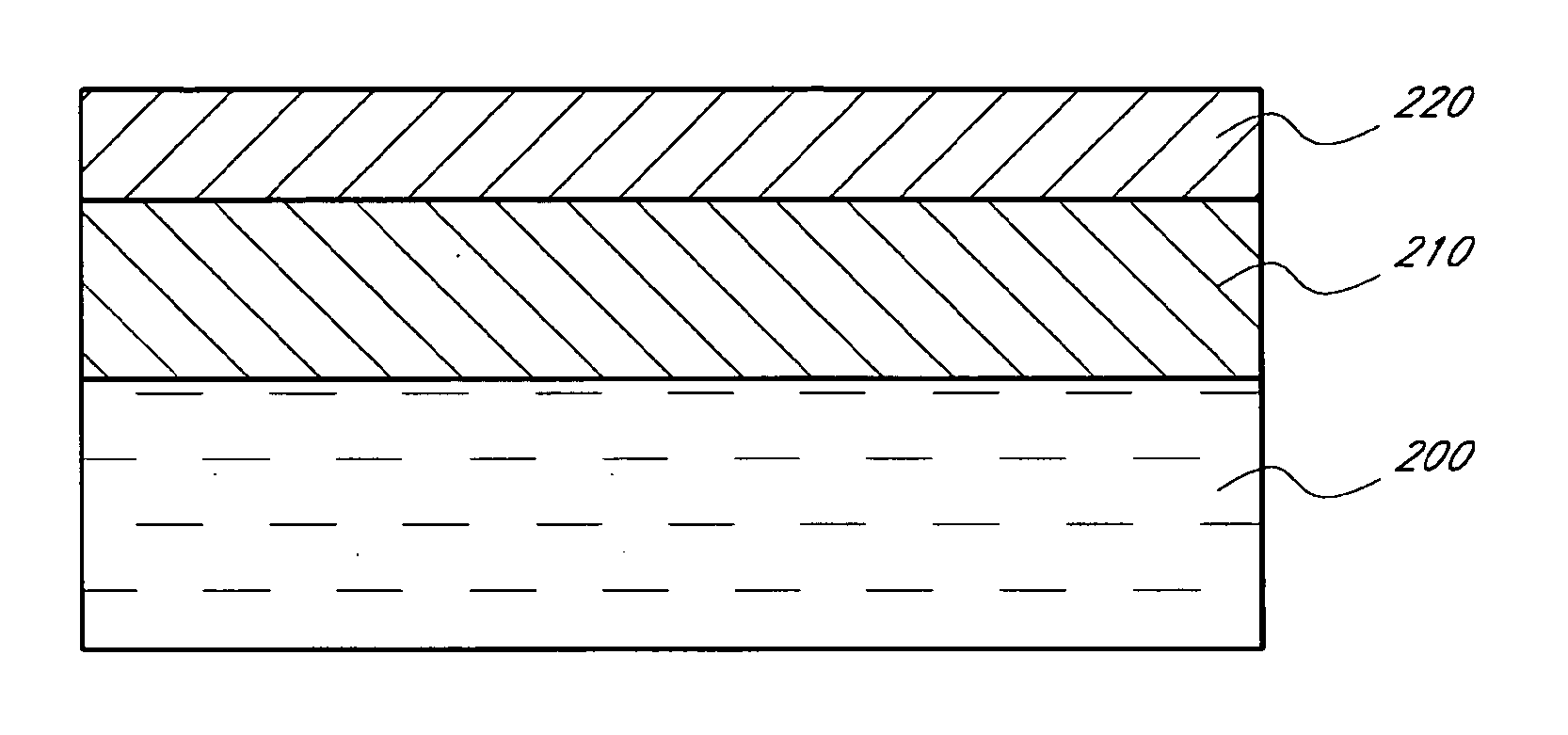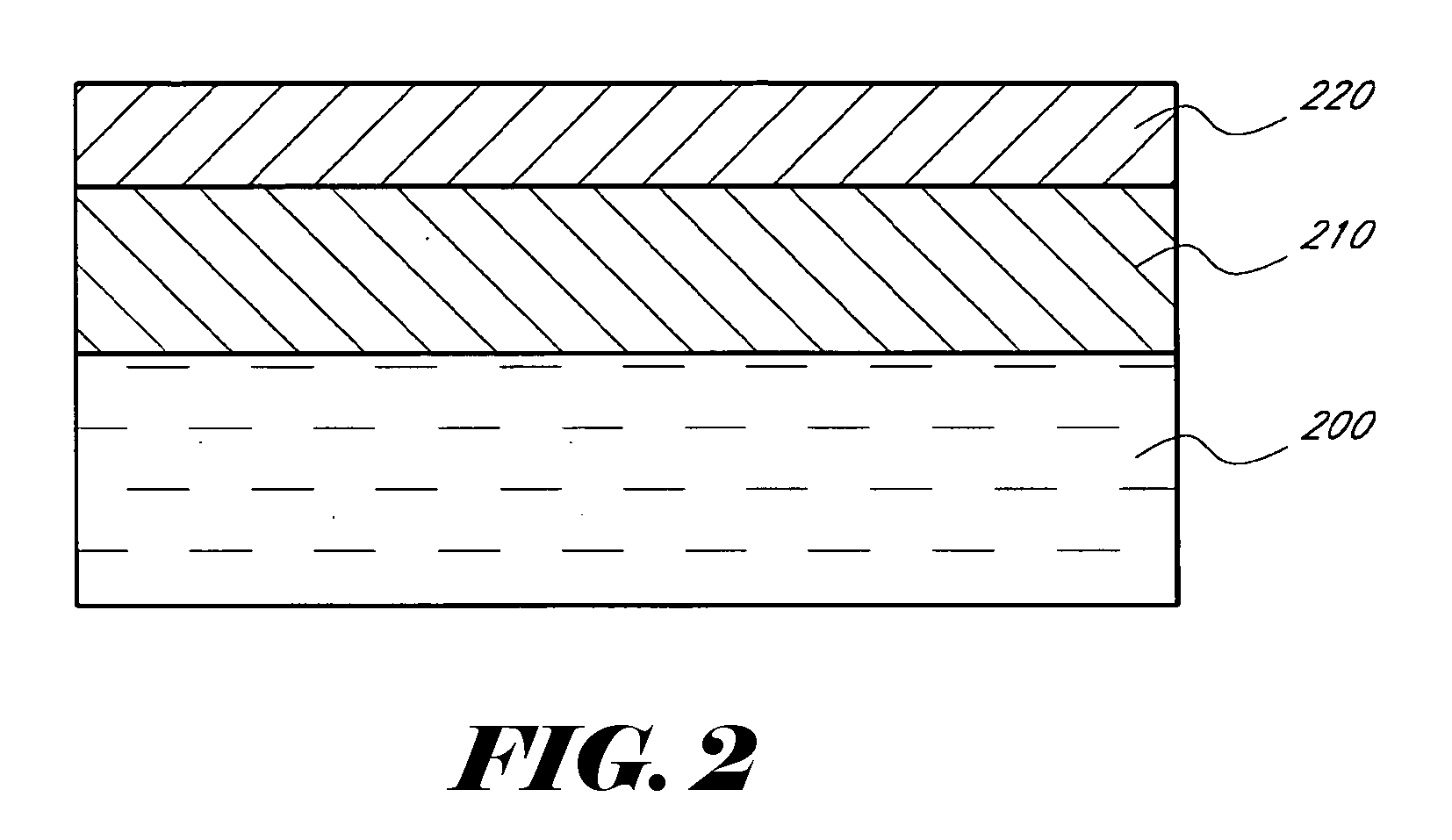Silane and borane treatments for titanium carbide films
a titanium carbide and treatment technology, applied in the direction of semiconductor/solid-state device manufacturing, basic electric elements, electric devices, etc., can solve the problems of limiting the maximum deposition temperature, limiting the growth temperature, and still having problems with impurity content in ald films, so as to reduce the oxidized portions
- Summary
- Abstract
- Description
- Claims
- Application Information
AI Technical Summary
Benefits of technology
Problems solved by technology
Method used
Image
Examples
example 1
TiC Films
[0113]Using the methods disclosed here in, various titanium carbide thin films were deposited. The thin film was then analyzed using Rutherford backscattering spectrometry, or RBS, to determine the composition of the various films.
[0114]After analyzing the various films, it was determined that they the following ranges of compositions on an atomic basis: about 17-20% Ti, about 17-27% Al, about 16-42% Si, and about 21-39% C.
example 2
TiAlC and TiAlSiC in a Single Wafer Reactor
[0115]Titanium-aluminium carbide (TiAlC) and titanium-aluminum-carbide-silicon (TiAlSiC) thin films were deposited by Atomic layer deposition (ALD) in Pulsar® 2000 R&D reactor using TiCl4 as the titanium source and Al(CH2CH3)3 as the aluminum and carbon source for the TiAlC films and in addition disilane (Si2H6) or trisilane (Si3H8) was used as a silicon source for TiAlSiC films.
[0116]TiAlC and TiAlSiC films were deposited using alternate and sequential pulses of TiCl4 and Al(CH2CH3)3 and in the case of TiAlSiC films additional alternate and sequential pulses of disilane (Si2H6) or trisilane (Si3H8) were provided. TiAlC films were also soaked with disilane (Si2H6) or trisilane (Si3H8) for about 1 minute. Films were deposited and treated at a reaction temperature of about 415° C. TiCl4 was pulsed for 0.05 s and purged for 5 s. Al(CH2CH3)3 was pulsed for 0.5 s and purged for 5 s. Si2H6 or Si3H8 was pulsed for 0.5 s and purged for 5 s. The Al(...
PUM
| Property | Measurement | Unit |
|---|---|---|
| room temperature | aaaaa | aaaaa |
| reaction temperature | aaaaa | aaaaa |
| work functions | aaaaa | aaaaa |
Abstract
Description
Claims
Application Information
 Login to View More
Login to View More - R&D
- Intellectual Property
- Life Sciences
- Materials
- Tech Scout
- Unparalleled Data Quality
- Higher Quality Content
- 60% Fewer Hallucinations
Browse by: Latest US Patents, China's latest patents, Technical Efficacy Thesaurus, Application Domain, Technology Topic, Popular Technical Reports.
© 2025 PatSnap. All rights reserved.Legal|Privacy policy|Modern Slavery Act Transparency Statement|Sitemap|About US| Contact US: help@patsnap.com



